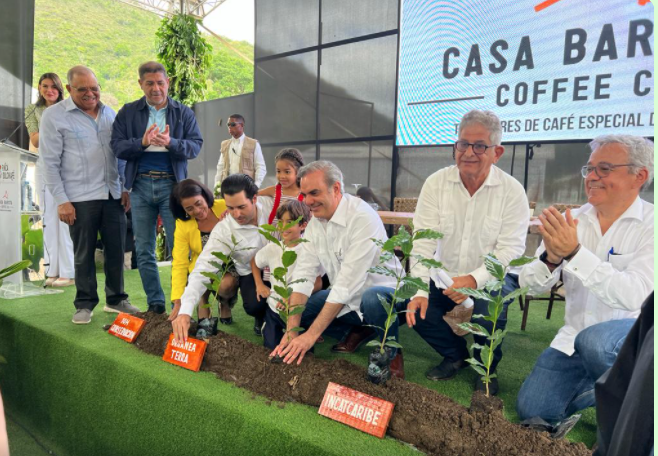
In the very small hilly town of Polo, in Barahona province, President Luis Abinader received the formal proposal to relaunch the nation’s coffee production that was almost destroyed by the onslaught of the blight of “coffee rust.” This fungus attack is said to have wiped out over 90% of Dominican coffee farms. Over the past 10 to 12 years, coffee farmers, supported by zero-interest loans and other financial assistance from the Agriculture Bank and programs form the Ministry of Agriculture have slowly replanted and re-shaped the nation’s coffee lands. The higher elevations to the west of Barahona are prime coffee lands, and the presentation of the project to re-launch coffee production took place during the Coffee Festival in Polo.
The idea behind this push is for the government and private entities to commit RD$4.5 billion over the next five years to improve, expand and harvest a coffee crop that will once again allow the Dominican Republic to export coffee as well as completely supply the nation’s nearly insatiable demand for the aromatic brew. Back in 2009, the DR exported 900,000 bags of coffee.
Speaking during the inauguration of the farm projects under the umbrella of the collaboration of IncatCaribe (Cesar Ros), Organea Terra-Café Barrista (Manuel Ramos) and SOH Conservación- Hermanos Moreno (Jaime Moreno), President Abinader commended the entrepreneurs for their support to agroforestry. The IncatCaribe, Organea Terra have joined forces in an operation that emphasizes producing high quality specialty coffee. He spoke of extending governmental Bagricola financing to take actions to instate a grace period covering the duration of the growing phase that in the case of coffee is four years.
President Luis Abinader was in Peravia, Azua and Barahona over the weekend, where he visited and inaugurated projects worth over RD$5 billion. He also attended the start of the construction of the Azua trauma center.
Read more in Spanish:
Listin Diario
Presidency
Hoy
31 October 2022

